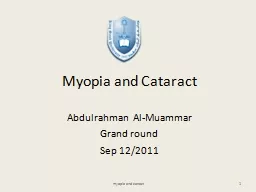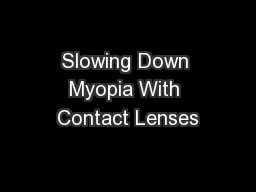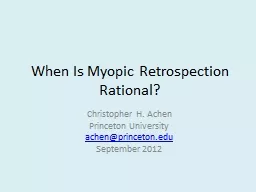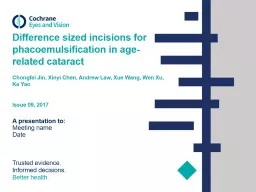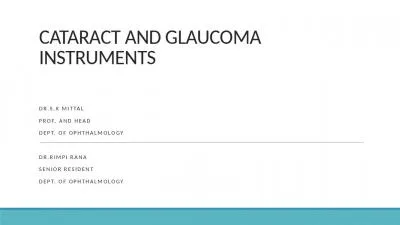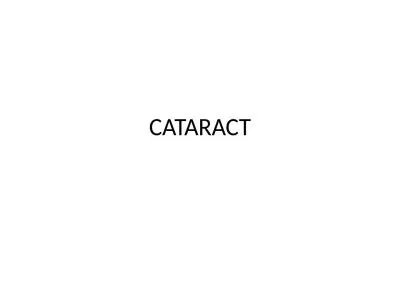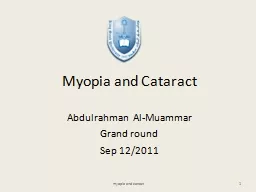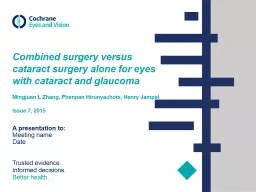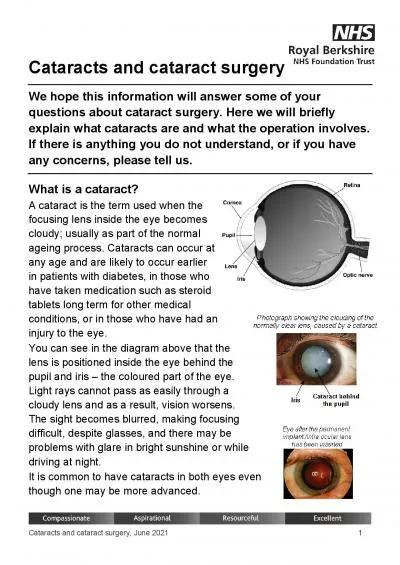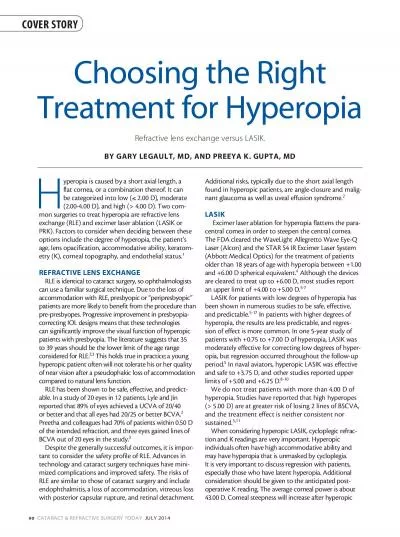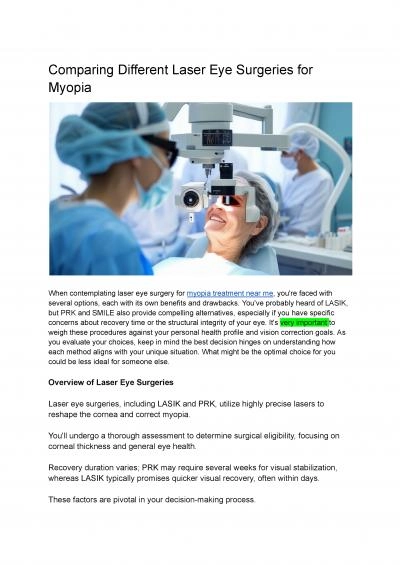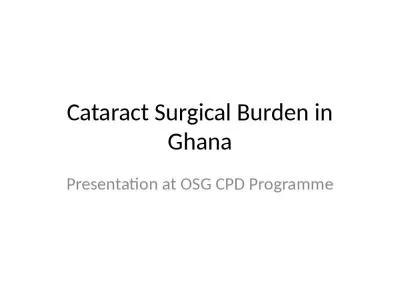PPT-Myopia and Cataract
Author : pamella-moone | Published Date : 2017-05-21
Abdulrahman AlMuammar Grand round Sep 122011 1 myopia and catract Outline Prevalence of myopia Association between cataract and myopia Clinical characteristics and
Presentation Embed Code
Download Presentation
Download Presentation The PPT/PDF document "Myopia and Cataract" is the property of its rightful owner. Permission is granted to download and print the materials on this website for personal, non-commercial use only, and to display it on your personal computer provided you do not modify the materials and that you retain all copyright notices contained in the materials. By downloading content from our website, you accept the terms of this agreement.
Myopia and Cataract: Transcript
Download Rules Of Document
"Myopia and Cataract"The content belongs to its owner. You may download and print it for personal use, without modification, and keep all copyright notices. By downloading, you agree to these terms.
Related Documents

